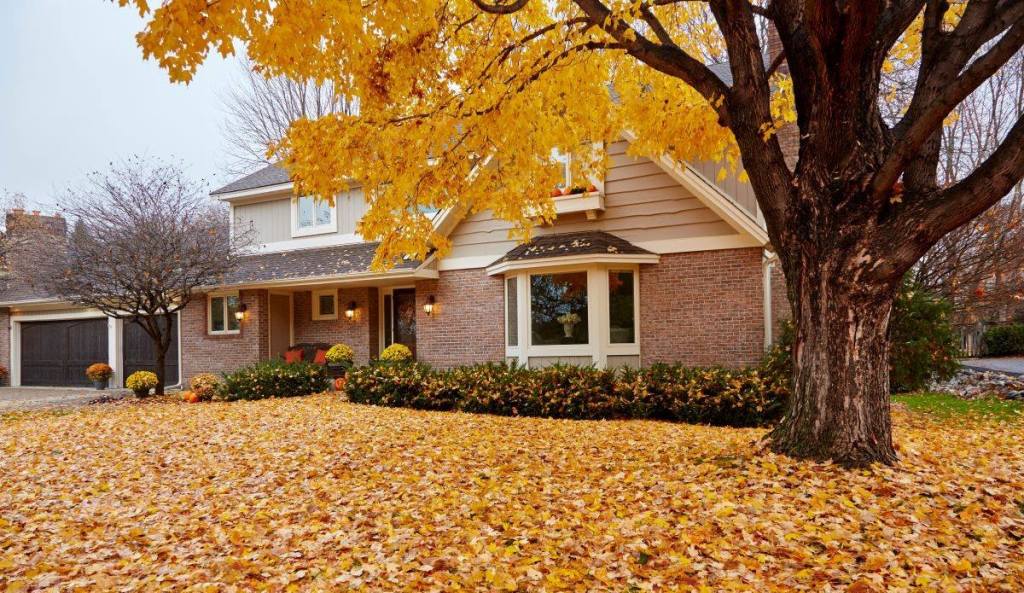About a year ago, I started noticing a parallel between the housing market and the labor market. Unemployment in the country is very low. Everyone has a job. The conventional wisdom for almost three years has been that job market must weaken, unemployment must be rising. But for three years, unemployment has stayed low.
Normally when unemployment is this low, people are confident that they’ll find a new job and they are much more likely to quit a current gig that isn’t right for them. But an interesting thing has happened in the post-pandemic era. Even though layoff rates are low, the rate at which companies are hiring is also low. As a result, people are quitting their jobs less often. Companies are reluctant to hire more, employees are afraid to quit. No one wants to move.
Compare that to the housing market. Home owners have a good thing in their cheap mortgages and high equity. Buyers are reluctant to buy. No one wants to move. Over the last decade, Americans were migrating quickly from the high-cost coastal states to the sun belt for cheaper homes. In the last two years, that migration has slowed down and even reversed in some cases. Housing, like jobs, is in what I call ‘The Great Stay’. That has supply and demand implications and also price implications.
How does ‘The Great Stay’ look right now? Here’s this week’s data.
Inventory declined
Overall inventory of unsold single family homes on the market declined this week to 732,000 homes. That’s down a quarter of a percent from last week. There are now 34% more homes on the market than a year ago.
Last year, inventory was rising by almost 2% per week in the middle of October as homebuyer demand deteriorated. This week it fell by a quarter of a percent. The inventory trends are very different compared to a year ago. There are 34% more homes on the market now, but just a few weeks ago that was a 40% difference. So that’s compressing now each week.
Some of this week’s inventory decline was helped by western Florida, which had a lot of withdrawn listings and very few new listings due to the two hurricanes. Tampa has much fewer homes for sale now than a couple weeks ago.
Of the big cities which experience increased inventory for the year, Phoenix and Denver have not yet peaked. Denver has more unsold inventory now than any time in the last decade. Southern California inventory is probably at the peak for the year. LA has more homes on the market than a year ago, but fewer than other recent years. Dallas inventory ticked down this week, but that’s just one week and there are lots of homes for sale in Dallas. And even through Tampa has fewer homes for sale this week, Orlando — which escaped much impact from the storms — has more.
This is the patten that I’ve been talking about recently. This is The Great Stay. We’re staying in our jobs longer, in our home towns longer, and in our houses longer. You can see the Great Stay in the inventory data. For the metros you think of as outbound migration markets, that migration has slowed so those out-bounders are selling less. Inventory is tighter in LA, Chicago, New York, etc. For the assumptive inbound migration markets, that’s where inventory still continues to build — Denver, Texas, Florida.
I expect The Great Stay to mitigate some next year, if we’re lucky and interest rates ease and provide a stimulus for the economy. If that happens these migration patterns would pick back up slightly so the regional inventory imbalance would moderate.
New listings tick up
New listings ticked up to 63,000 plus 10,000 more immediate sales. That’s about 8% more sellers than a year ago, about what we’ve been averaging all year. 2023 was probably peak Great Stay. During this year as rates stayed higher for longer, sales did not increase, that meant that inventory of unsold homes was growing.
This week though, with more sales and more withdrawals, inventory fell. There’s a lot of turmoil in the Florida markets, especially Tampa and Sarasota. Those are big enough markets to skew the national totals.
As has been the case all year for me, I’m watching the new listings count for signs that pent-up seller supply may start leaking or surging onto the market. In this view, the dark red line would rise to the old normal levels. In October it would not be uncommon for 75,000 or 80,000 sellers to list their homes in the middle of October. Once the Great Stay conditions ease, one place we’d see it is in rising rates of new listings each week. We just don’t see it yet.
New pendings up
We’re now at the third week in a row with more sales than the last two years. Even though sales are not strong, the conditions are better than they were in either of the fourth quarters of 2022 or 2023.
In fact, the 61,000 new contracts pending this week for single-family home purchases was 16% more than the same week a year ago, when sales were tanking with the mortgage rate spikes. The last few weeks have been averaging 9% more sales than last year.
Mortgage rates are back up, so I expect this growth pace to dip a bit over the next few readings. These home sales gains are average across the country, but the recovery is not the same in individual markets. It shouldn’t be surprising that Florida is averaging fewer sales than the last two years, given the hurricane impacts in much of the state. Texas is averaging about 10% more sales now than the last two years. States like California, Colorado, or Ohio have grown compared to last year, but are still averaging fewer home sales each week than in October of 2022.
The key takeaways when we look at the weekly newly pending home sales is that nationally we can see slightly better conditions than the last two years. This is growth differs per local markets though and is very dependent on mortgage rates not jumping back up again. These are very fragile gains.
Home prices down
The median price of all the homes that went into contract this week is $389,000. That’s down 1.5% for the week after a surprising climb over the last month. It’s been really notable how home prices climbed at the same time that sales responded to lower mortgage rates. Home prices have generally not declined even as sales have been weak for two full years, but they moved up as soon as demand picked up even a tiny bit.
I think it’s important to point out that even in those markets where inventory is building, we haven’t observed home prices falling.
Why is that? In The Great Stay, the parallel is the labor market. Companies are not hiring new workers. Demand for workers is way down. But the supply of workers is way down too, since we’re not quitting our jobs either. As a result, income is growing for Americans. Supply and demand are working together to create a surprisingly supportive environment for salaries and for home prices.
Home prices also have a condition called “downside stickiness,” which is visible in all markets, but may be especially strong now during The Great Stay. Home sellers have a current price in mind, and they don’t really want to sell for less. This is known as “loss aversion.” We see this now with homes being withdrawn from the market rather than discounting to spur demand. Because homeowners have cheap financing, they have the upper hand.
This pricing psychology has limits. At some point if there’s a tipping point, then loss aversion makes me feel more urgency to sell. That happened in the 2008 bubble burst. If I see prices in a deflationary spiral, I am more incentivized to dump my property now before it gets worse. That action, of course, makes it worse. We have not seen that spiral anywhere in the country. There are lots of folks who watch our video each week who think it’s coming, but there’s no evidence of broadly declining home prices anywhere in the data. Denver has more homes for sale now than any time in the last decade, but home prices are flat from last year.
The takeaway for home prices recently is that they were sensitive to the upside as soon as mortgage rates eased closer to 6%.
Price reductions grew
The percentage of homes on the market with price reductions grew by just 10 basis points this week. Currently just over 40% of the homes on the market have taken a price cut from their original list price. That’s slightly more than last year at this time and hasn’t started coming down for the fall, but the fact that the price cuts curve has been flat for over a month is telling about where buyers are sellers are settled into The Great Stay equilibrium. It tells us there is no deflationary spiral visible, even though home buyer demand is still pretty low.
This is a time of year when it would be totally normal for price reductions to be accelerating. It’s late in the season, and if your home has not seen offers, you might opt to cut the asking price to stimulate demand.
The fact that price reductions are not accelerating tells us that there are some homebuyers at these prices. And it illustrates that sellers have no urgency to sell at a discount. They’d rather stay. We have measured withdrawal rates pretty high nationally. If you don’t have offers for your home at this price, you have two options: cut the price or withdraw the listing. So far, many homeowners are choosing to stay.
It’s wild how quickly the sentiment can change in a week. We were maybe at a transition point to get some home sales growth, and suddenly we had a very big mortgage rate spike. We know that buyers can put the brakes on very quickly. So potential homebuyers and sellers need to hear the data from you so they know how to act. I
Mike Simonsen is the founder of Altos Research.







Very good information and perspective